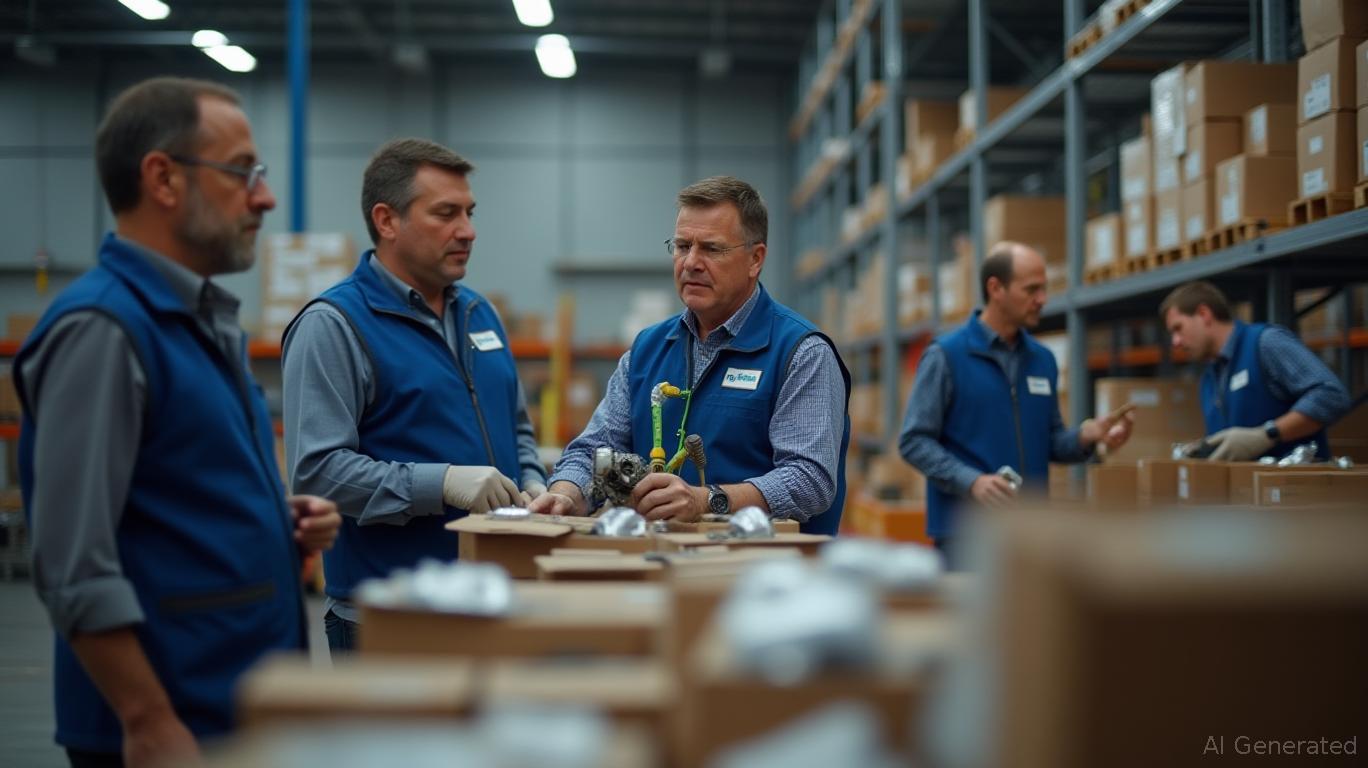O'Reilly's 15-for-1 Split: A Masterstroke in a Recession-Proof Market?

Let's cut to the chase: O'Reilly Automotive's (NASDAQ: ORLY) 15-for-1 stock split—pending shareholder approval—might just be one of the smartest moves in corporate America right now. This isn't your typical “we're desperate to look big” split like the ones we've seen from speculative plays like Regencell. This is a strategic play in a recession-resistant market, backed by a fortress balance sheet, an aging U.S. vehicle fleet, and a buyback machine that's reduced shares by 59% since 2011. Let's unpack why this split isn't just about optics—it's about locking in long-term value.
The Split's Secret Sauce: Democratizing Ownership
O'Reilly's split—announced in March 2025—doesn't just make its sky-high stock price (over $1,300 pre-split) more digestible for retail investors. It's a loyalty play for its employees. The company's stock purchase program, which offers shares at a 15% discount via payroll deductions, suddenly becomes accessible to rank-and-file workers who couldn't afford fractional shares before. This isn't just about perks—it's about aligning the workforce with the company's success. When employees own whole shares, they're more invested (pun intended) in the company's performance.
Compare this to splits like Regencell's (REGN) 4-for-1 in 2024, which was all about boosting share count to fund speculative biotech bets. O'Reilly's move? Pure operational genius. It's using the split to democratize ownership while keeping its focus on the fundamentals.
Why Auto Parts Are a Recession Hedge
The U.S. vehicle fleet's average age—12.6 years—is a gold mine for O'Reilly. Cars don't last forever, and as they age, demand for brakes, transmissions, and batteries skyrockets. O'Reilly's 6,378 stores across 48 states and its hub-and-spoke distribution network mean it can supply parts faster than competitors. This isn't a fad; it's a defensive cash generator. Even in a recession, people don't skip car repairs.
The Buyback Machine: Fewer Shares, More Value
Since 2011, O'Reilly has reduced its share count by 59% through buybacks. That's not a typo. Fewer shares mean more earnings per share (EPS) growth, even if revenue stagnates. And with free cash flow hitting $2 billion in 2024, the buybacks aren't slowing down. This split won't dilute that progress—it just lowers the entry price for new investors while keeping the buyback engine humming.
The Split's Timing: A Master Class in Market Psychology
The split takes effect in June 2025, just as Q2 earnings roll in. Why now? Because O'Reilly's Q1 2025 results were fire: record revenue of $4.14 billion, up 4% year-over-year, despite headwinds like auto claims liabilities. The split's announcement in March already primed the pump, pushing the stock up +0.9% since April's earnings.
The Bear Case? Overvaluation and Tariffs
Critics will point to O'Reilly's 33.3 P/E ratio—38% above its 10-year average—as a red flag. But here's the thing: this isn't a tech stock. This is a cash cow in a defensive industry. If the S&P 500's average P/E is 24, O'Reilly's premium is justified by its track record of 20%+ annual revenue growth since 2010.
Tariffs on imported parts? Sure, they're a risk. But O'Reilly's vertically integrated supply chain and acquisitions like 2023's Groupe Del Vasto (expanding into Canada) are already mitigating that.
Bottom Line: A Stock Split With Teeth
This isn't a “split to look busy” move. O'Reilly's split is strategic, employee-focused, and timed to capitalize on its recession-resistant tailwinds. Contrast that with speculative splits where fundamentals are shaky, and you've got a clear winner.
Investment Advice: Buy the dip. The post-split price of around $90 (from $1,371) makes this accessible to retail investors, and the buyback machine ensures long-term EPS growth. If you're building a recession-resistant portfolio, this is a core holding.
Remember: In a world of chaos, auto parts are a certainty. And O'Reilly's got the network, the cash flow, and now the split to make it a no-brainer for the next decade.
Disclosure: The author does not own shares in at the time of writing.

Comments
No comments yet